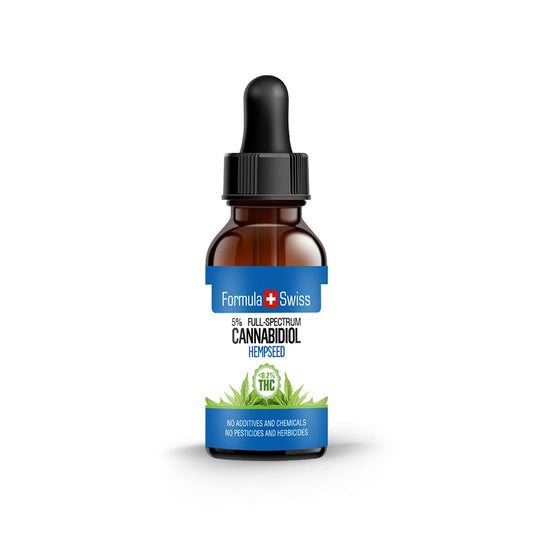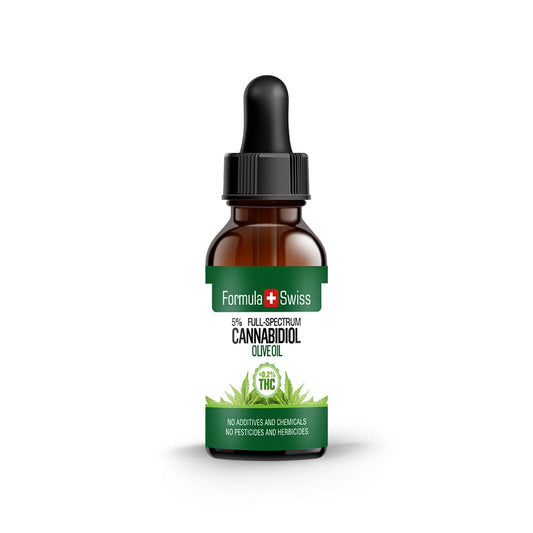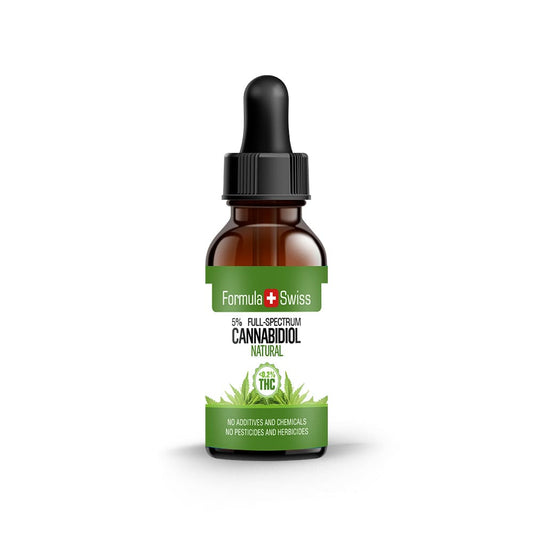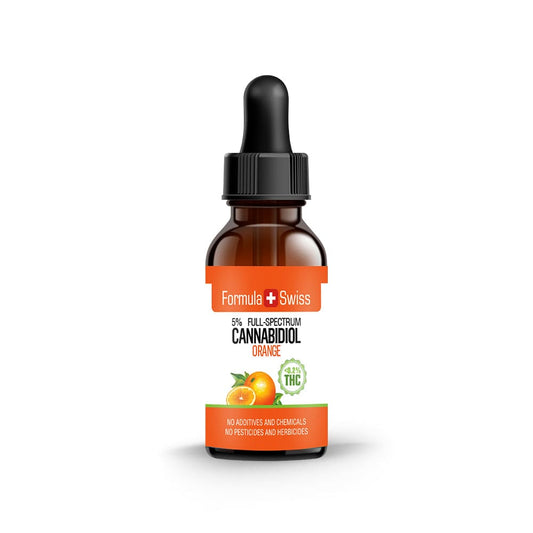Among the compounds found in Cannabis sativa L., one cannabinoid that’s increasingly caught people’s interest is cannabichromene, or CBC. First identified back in 1966, it’s slowly stepped into the spotlight as researchers and those in the industry begin to pay closer attention.
Unlike THC, CBC doesn’t have any psychoactive effects, which makes it particularly appealing in scientific investigations.
After more than ten years working with cannabis cultivation, extraction methods, and hands-on research, I’ve seen a definite shift toward exploring the less familiar cannabinoids within the hemp plant. CBC is one of those compounds that’s starting to earn its place in the conversation.
Looking into CBC means studying how it connects with certain receptors in the body. This gives us a better sense of where it fits into the wider cannabinoid landscape, adding another layer of understanding to the plant’s natural complexity.
Prefer watching over reading? This video covers the key points from the article:
Save up to 30% when you order your CBD oil today
Key takeaways
- Cannabichromene (CBC) is a non-psychoactive cannabinoid identified in 1966.
- CBC forms through the enzymatic conversion of cannabigerolic acid (CBGA) into cannabichromenic acid (CBCA), which later decarboxylates into CBC.
- Unlike THC, CBC does not strongly bind to CB1 receptors in the brain.
- CBC interacts with other receptors in the body, contributing to its distinct biochemical profile.
- CBC is typically present in lower concentrations in hemp and cannabis plants compared to CBD and THC.
This article is provided for informational purposes only and does not relate to any of the products available in our webshop. For more information, please see our full disclaimer.
Introduction to CBC (Cannabichromene)
Cannabichromene (CBC) is a non-psychoactive cannabinoid found in Cannabis sativa. Unlike THC and CBD, CBC has a unique interaction profile with the body’s receptor systems, attracting interest for further scientific study.
Understanding CBC requires analysis of its chemical structure, origin, and its interaction with receptors, such as TRP and CB2. These receptors play roles in various physiological processes, offering a foundation for understanding CBC’s characteristics in research contexts.
CBC originates from CBGA, often referred to as the precursor to several major cannabinoids. This early role in cannabinoid synthesis highlights CBC's relevance in plant-based compound studies.
CBC was first isolated in 1966 by two research groups—Gaoni and Mechoulam, and Claussen et al. Their work marked the initial identification of CBC as a naturally occurring cannabinoid in Cannabis sativa.
This discovery laid the foundation for ongoing scientific exploration of CBC’s features. Though less abundant than THC or CBD, CBC’s distinct molecular behaviour continues to make it a subject of interest.
Understanding the precise application and concentration of CBC is essential for accurate formulation and analysis within research and development.
| Feature | CBC | THC | CBD |
|---|---|---|---|
| Psychoactivity | Non-psychoactive | Psychoactive | Non-psychoactive |
| Receptor interaction | TRP, CB2 | CB1, CB2 | TRP, CB2 |
Chemical structure of CBC
Cannabichromene (CBC) shares a biosynthetic origin with other cannabinoids through the precursor CBGA. It is produced when CBGA is converted into CBCA via enzymatic processes.
When CBCA is exposed to heat or light, it undergoes decarboxylation, resulting in the neutral form known as CBC. Its chemical formula is C₂₁H₃₀O₂, and its structure is similar to THC and CBD, though subtle differences affect its receptor interactions.

CBC contains a three-ring core and a hydrocarbon tail, which contributes to its solubility in lipids and its role when examined alongside other cannabinoids and terpenes in formulation studies.
Unlike THC, CBC does not bind effectively to CB1 receptors, which accounts for its non-intoxicating characteristics. Scientists continue to explore how CBC’s molecular structure influences its applications in cannabinoid-focused research.
Order and enjoy up to 30% off your CBD oil purchase
The complex biochemistry behind CBC
Examining Cannabichromene (CBC) reveals a complex journey from biosynthesis to receptor interaction. This biochemical pathway provides insight into CBC’s characteristics and its function in plant biology and laboratory analysis.
Based on a scientific review published in the journal Molecules, Cannabichromene (CBC) is biosynthetically derived from Cannabigerolic acid (CBGA), the common precursor for many major cannabinoids found in Cannabis sativa. Through the action of CBCA synthase, CBGA is enzymatically converted into Cannabichromenic acid (CBCA).
CBCA then undergoes decarboxylation—a process triggered by heat or light—to form the neutral cannabinoid CBC. This transformation is necessary to activate CBC’s structural form for scientific evaluation.

According to a scientific review in the Journal of Pharmacology and Experimental Therapeutics, CBC does not exhibit intoxicating properties like THC. CBC demonstrates limited interaction with CB1 receptors and acts as a modest agonist at CB2 receptors.
Instead of directly activating CB1 or CB2 receptors, CBC has been observed to modulate the endocannabinoid system by inhibiting the breakdown of 2-arachidonoylglycerol (2-AG), while showing limited influence on anandamide (AEA) degradation.
The Endocannabinoid System (ECS)
| Stage | Chemical process | Resulting compound |
|---|---|---|
| Synthesis | CBGA production | CBGA |
| Enzymatic transformation | Conversion to CBCA | CBCA |
| Activation | Decarboxylation | CBC |
| Interaction | Modulation of 2-AG degradation | Indirect ECS influence |
CBC also interacts with transient receptor potential (TRP) channels, which play a role in detecting physical and chemical stimuli. These interactions contribute to CBC’s broader profile, making it a topic of active research.
By studying CBC’s effects across different receptors, researchers aim to build a clearer picture of its role in cannabinoid science.
The interest in Cannabichromene (CBC)
CBC continues to attract scientific attention, especially within the study of non-psychoactive cannabinoids. Its ability to interact with different receptor systems has made it a focal point in emerging cannabinoid research.
Studies are currently evaluating CBC’s interaction with systems related to sensory function. These assessments are carried out in controlled environments, contributing reference data for comparative studies.

Another key area involves examining CBC’s relation to behavioural models, although this remains in preliminary stages and is being approached with caution and ongoing review.
Investigations are also underway to determine how CBC interacts with specific cell lines under laboratory conditions. These studies add to our growing understanding of cannabinoid mechanisms within biological frameworks.
As research into CBC and similar compounds advances, the knowledge base surrounding non-psychoactive cannabinoids is steadily expanding.
Order CBD oil now and save as much as 30%
A closer look at CBC research and studies
Recent studies have explored how CBC compares and contrasts with other cannabinoids such as CBD. These investigations highlight CBC’s specific interactions beyond CB1 and CB2 receptors.
One study published in BMC Genomics used human iPSC-derived hepatocyte models to assess dose-dependent changes in gene expression related to CBC. This included the use of RNA sequencing (RNA-seq) and gene set enrichment analysis (GSEA) to investigate CBC’s effects across various biological pathways.
Comparison with CBD has helped differentiate CBC’s specific mechanisms, including its potential role in modulating anandamide levels. These distinctions contribute to understanding how cannabinoids may function together or independently.
Research from the Journal of Pharmacology and Experimental Therapeutics further confirms CBC’s minimal affinity for CB1 and moderate activity at CB2 receptors, reinforcing its non-psychoactive designation and distinct pharmacological profile.

Rather than directly activating major cannabinoid receptors, CBC may influence the endocannabinoid system indirectly and affect the activity of other cannabinoids. Continued research is needed to better understand its characteristics.
Fully understanding CBC’s role within cannabinoid science requires ongoing exploration of the underlying biochemical processes.
Exploring the future of CBC
Cannabichromene (CBC), a naturally occurring compound in Cannabis sativa, is receiving growing attention from researchers. Unlike THC, CBC does not induce intoxicating effects, which makes it of particular interest for those studying non-psychoactive cannabinoid profiles.
Recent work published in Comparative Clinical Pathology highlights CBC’s ability to bind with specific receptors, prompting further scientific interest in its possible functions within biological systems. These findings are driving calls for additional research to better define CBC’s activity.
Researchers are particularly examining CBC's potential interaction with systems linked to neurological activity and sensory processing. There is also interest in its role within the broader "entourage effect", where cannabinoids and other compounds may influence each other’s behaviour.

CBC is currently undergoing evaluation in laboratory and preclinical research settings. Experts agree that more structured, large-scale human studies will be essential for drawing well-supported conclusions about its role.
At present, CBC remains a focus for scientific inquiry. Its evolving research profile is followed closely by professionals and institutions interested in expanding cannabinoid research and application knowledge. Continued exploration of CBC may provide valuable insights into the complexity of Cannabis sativa compounds.
Personal perspective
From my experience working extensively with cannabis plants and cannabinoids, I find CBC to be a particularly fascinating compound. Although often overshadowed by CBD and THC, CBC holds a distinct place in the plant's cannabinoid spectrum.
Its interaction with various receptors and lack of psychoactivity have made it a topic of ongoing interest in scientific and cultivation-focused discussions.
Over time, gaining a deeper understanding of cannabinoids such as CBC has contributed significantly to appreciating the plant’s diverse chemical composition and the nuanced processes involved in its growth and development.
Don’t miss out—save up to 30% when you purchase CBD oil today
Frequently asked questions
What is Cannabichromene (CBC)?
Cannabichromene (CBC) is a naturally occurring compound in the cannabis plant. It is one of several key cannabinoids, though typically present in smaller quantities compared to THC and CBD.
How is CBC different from THC and CBD?
CBC does not produce intoxicating effects like THC. While CBD is more widely known, CBC has its own receptor interactions and chemical characteristics.
Where is CBC found in the cannabis plant?
CBC develops during the early growth stages of the plant. It originates from cannabigerolic acid (CBGA), the precursor to several cannabinoids.
Can CBC cause a "high"?
No, CBC does not result in intoxicating effects. It does not strongly bind to CB1 receptors, which are commonly associated with psychoactive experiences.
How is CBC processed in the body?
CBC primarily interacts with receptors outside the brain. Its biological activity is currently the subject of ongoing research.
What types of products may contain CBC?
CBC is present in a variety of formulations including oils and topicals. It is frequently included in combination with other cannabinoids to broaden product profiles.
Does CBC have a noticeable scent?
CBC itself is generally odourless. Any aroma in CBC-containing products typically comes from added terpenes or other botanical ingredients.
Is CBC commonly found in cannabis strains?
Most strains contain lower levels of CBC. However, some have been selectively developed to express a slightly higher CBC content.
How does CBC interact with other cannabinoids?
CBC may influence how other cannabinoids behave when present together. These interactions are an area of interest in cannabinoid formulation research.
How are new cannabinoids being discovered and classified?






